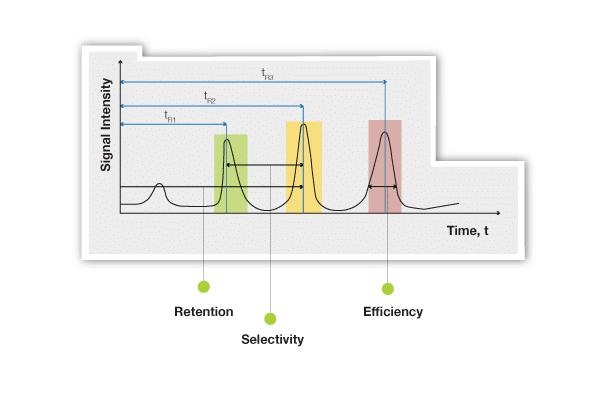World Cup Fever: How to score purer compounds by improving resolution in chromatography
Soccer fans or not, all chemists want to give impurities a red card. Improving resolution should be a key element in every chromatographer’s game plan for optimizing the chromatographic process and achieving samples with higher purity.
I am fully infected by World Cup fever these days. This might be why I ended up in several heated discussions with my friends over whose house we were going to watch the games at. All of us are livid soccer fans, so each of us wanted to host the viewing parties, especially for the finals.
We finally settled the matter by picking the friend with the best TV. Not the biggest TV set mind you, but the one with the best resolution. We mutually agreed that it is not the size of the soccer ball that matters, but how well and sharp we can see it.
Besides for soccer games on TV, resolution is incredibly important for another one of my favorite activities and that is chromatography.
In contrast to image resolution, which measures the amount of detail in an image, resolution in chromatography measures the ability to separate two or more components.
You might be left wondering why optimal resolution during chromatographic separation is so important.
Well, optimal resolution guarantees higher purity of the target compound. And purer compounds lead to happier chemists.
Ah, now that I have captured your interest, you are certainly itching to know how resolution during the chromatographic process can be improved.
To achieve optimal resolution, three conditions need to be fulfilled:
- The compounds must be retained on a stationary phase. This process is quantified by a parameter named retention.
- The compounds must be retained differently. This is quantified by a parameter called selectivity.
- Obtained peaks must be sufficiently narrow in order to avoid or reduce overlapping. This is quantified by a parameter termed efficiency.

These three major factors, column efficiency, selectivity factor and retention factor, can be expressed mathematically in the familiar resolution equation:

How can you influence each of these factors in your favor?
Column efficiency – This parameter is related to column conditions such as particle size and shape, as well as pore size or length. Use of columns or cartridges with smaller particle sizes results in sharper peaks, which enables the separation of closely eluting peaks. Other factors including flow rate and sample loading could also influence column efficiency. All of these conditions will be discussed in more detail in further posts.
Selectivity – This factor relates primarily to the chemistry of the system, which can be either stationary phase or mobile phase chemistry. By altering these two characteristics, a change in the distance between two neighboring peaks can occur. The selectivity factor affects resolution most.
Retention – This factor is influenced primarily by the mobile phase composition, or better yet by the mobile phase strength. By changing the mobile phase strength, the equilibrium between the stationary phase and mobile phase is altered leading to a change in the eluting properties of the target components.
I do want to mention one last point.
Although good resolution is essential for increased purity of the target compound, one must remember another important factor in chromatographic experiments:
run time
Just as web designers need to balance between high image resolution and fast website loading times, chromatographers must balance the desire for good separations with that of reducing run time and solvent amounts needed for their chromatographic runs. In cases where a separation with some degree of overlapping is still acceptable, then you can certainly save time and materials by performing chromatographic runs without optimized resolution.
Oh, I like goals, especially when Belgium scores them, but the ultimate goal in chromatography is a bit different. We scientists simply aim to achieve maximal resolution in minimal time.
My suggestion for how to achieve this golden balance in the lab:
an optimal “run time/benefit” ratio is obtained with a resolution of 1- 1.5
What else should you stay tuned to besides soccer? The blog, of course. I will soon post new entries on selectivity, column efficiency and retention, with more details on how to change the factors and what target values to aim for to achieve the best resolution possible.
Until then, Olé!


WANT TO STAY IN TOUCH?
Click on the button and receive the latest posts directly in your messenger!
Related Posts
10th December 2018
How to optimize your mobile phase to improve selectivity and resolution in chromatography
Discover methods for choosing the most suitable solvent to achieve better selectivity and resolution in your separations→
10th December 2018
How to choose a stationary phase, optimize selectivity and get better resolution in chromatography
See the effects of selectivity on separation quality and get some great tips on how to optimize resolution by finding the ideal stationary phase for your application→
7th February 2019
Three chromatography problems the new Pure system solves
There are challenges in chromatography when it comes to user, sample and environmental safety. See how the Pure chromatography system sets out to solve them →
8th May 2019
Putting safety first during the chromatography process
Bart discusses how to maximize the safety of user, sample and the surroundings during the chromatography process →







